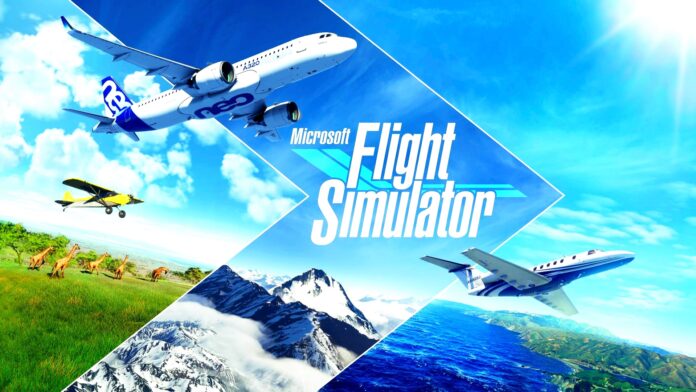There’s a lot more to flying than a few loops. That’s why the flight simulation on the PC suddenly turns into a real role-playing game.
For various reasons I can’t sit in a real plane at the moment – pandemic, time, money, take your pick, somehow it’s all coming together and sadly my flight jacket is hanging on the coat hook by the front door. It was only this winter that I really realised what a privilege I had been able to enjoy over the last few years – the freedom of moving in three dimensions and thus leaving the hectic everyday world behind is hard to describe, and hopefully I will finish my flying licence one day.
But I don’t only miss the movement through space, but also the whole surrounding. This includes the other people, but also the many well-considered regulations, which in themselves have a certain elegance. The procedures by which one approaches airfields; the radio traffic by which one coordinates with other people and by which a three-dimensional situation picture is created in one’s head; the flight planning with consideration of terrain and weather … When this and more interlock to create a consistent plan that also works, then it is not only very satisfying, but also simply beautiful, almost in an aesthetic sense.
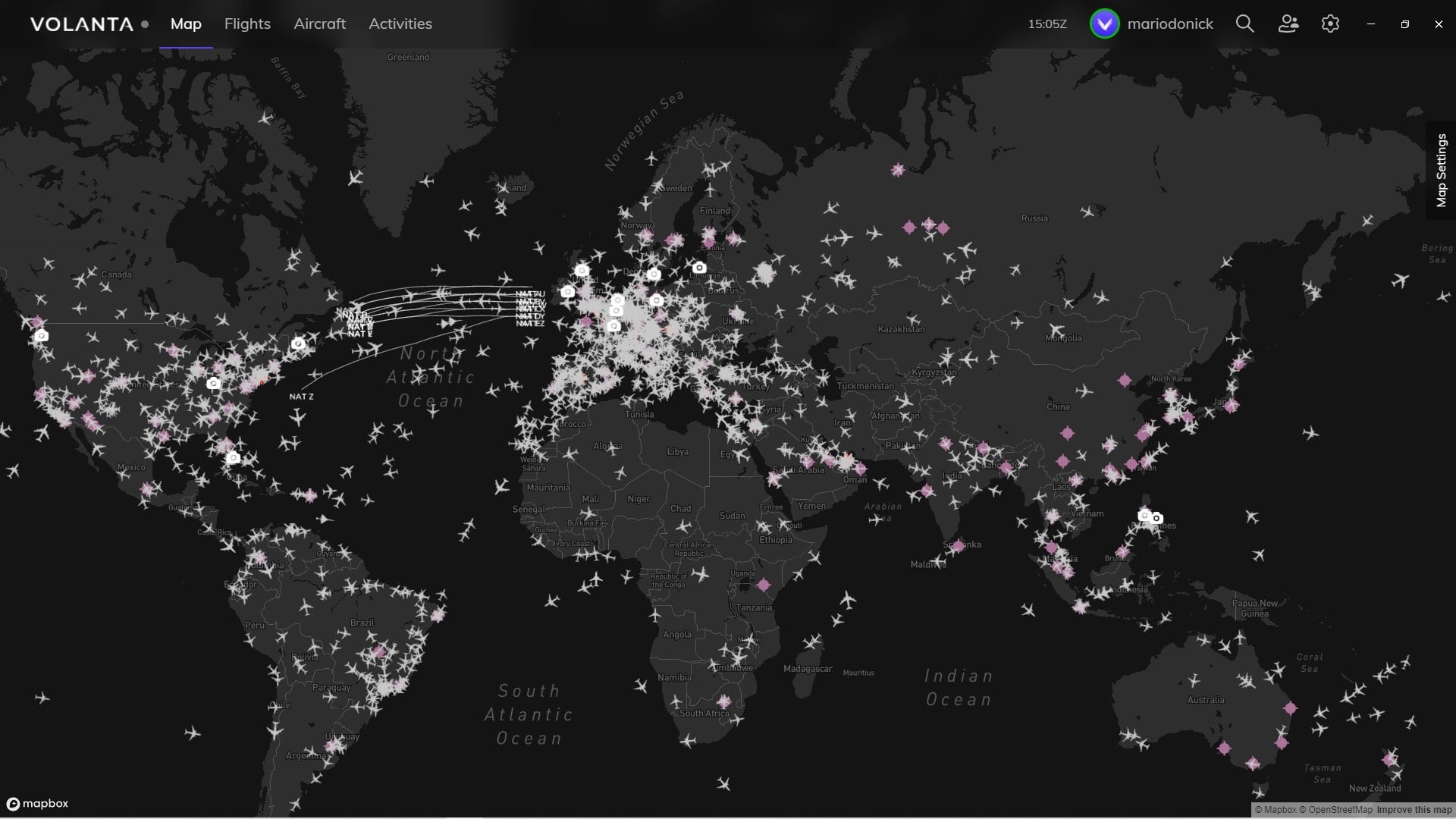
When using simulators on the PC, like Microsoft Flight Simulator, I always took a more relaxed approach. I didn’t need radio traffic, online flying or AI aircraft because I wanted the simulated airspace to myself. I used real procedures on the PC mainly when I was trying something out for a real flight or writing articles for GlobalESportNews. And various special hardware I had bought years ago lay in the attic for years. I didn’t need all that because there was the real plane.
But since things are different at the moment, my simulation style has changed in the last few weeks. And the more I think about it, the more it reminds me of a kind of role-playing game:
- I fly online frequently now, along with other people and quasi-professional air traffic control. Some people play the role of pilots; others do ATC, and everyone tries to do it as well as possible.
- To do this, I use tools like NeoFly or Air Hauler 2 to manage fictional transport or sightseeing flight companies, earn experience points there with quests, earn money, use it to expand the company, and so on.
- I get to know ‘my’ virtual plane really well, instead of constantly switching between different models.
- And I’m taking my role as a virtual pilot more seriously – I’m also virtually adhering to rules, procedures and processes that I know from reality and used to be lax about in simulation.
On the one hand, all this helps me not to completely lose previously acquired skills (navigation, communication, basic procedures) – hopefully I will need them again sometime. On the other hand, the whole game experience also becomes much more intense and very satisfying when everything works well together. But in order.
Table of Contents
Flying with people
For a long time I didn’t dare, but recently I signed up for an online flight simulator network – and it’s great.
The best known and largest network is VATSIM, followed by the smaller IVAO. On both networks, air traffic control is handled by other ‘players’ and participation is free. The rules for flying and communicating are based very closely on reality, or in some cases are completely the same. Those who do not yet know the rules can complete extensive training and take exams.
Quite a few people take up this challenge: If I look at Volanta (like FlightAware, but for flight simulation) now, on Monday afternoon, I see 977 people flying on VATSIM and 735 people flying on IVAO worldwide; on weekends that can easily be double. And it is usually easy to see that the virtual pilots are following official procedures.
In addition to the two major networks, VATSIM and IVAO, there is another important network, PilotEdge. This is much smaller in terms of both user numbers and geographical coverage, but has its own focus: training for the real world as well, guaranteed availability and reliable quality of the air traffic control offered.
Pay for radio traffic
I signed up with PilotEdge for the last two reasons. While the controllers at VATSIM and IVAO do the job in their spare time and thus quality and coverage can fluctuate, the controllers at PilotEdge are paid for the job and there are guaranteed hours of operation.
In return, participation costs a monthly fee. 19.95 USD is due if the Los Angeles – San Diego – Las Vegas region is enough. For 34.95 USD, the entire western USA is available, from Denver and Amarillo via Salt Lake City to San Francisco and up to Seattle. That’s the size of several EU states.
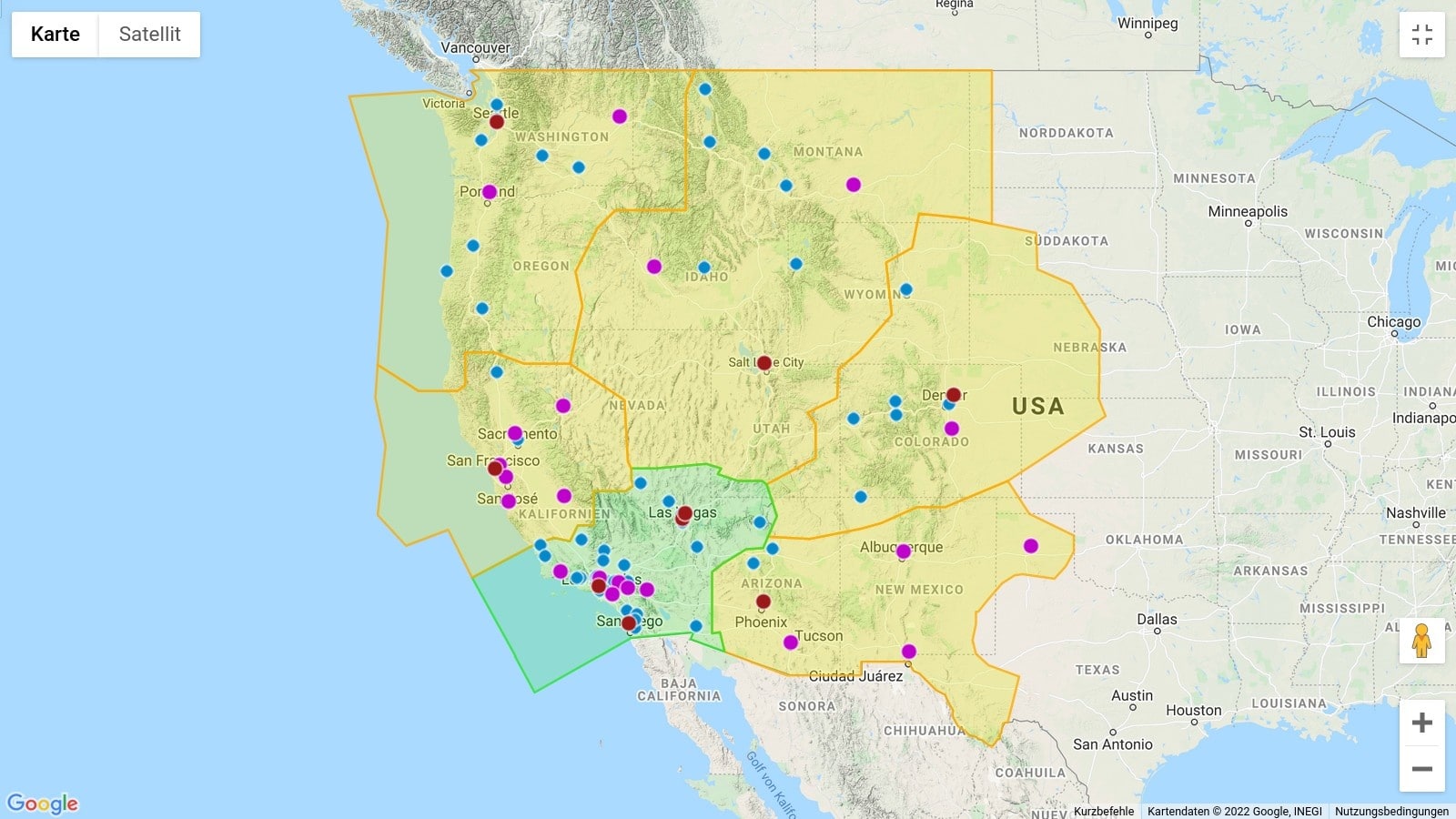
Due to the fees, the number of users is much lower than with VATSIM and IVAO, but because one controller serves several stations at the same time, you still have to pay attention to your own callsign and find the right gap for your own request. Of course, the request has to be in English, which is a challenge at first, because you don’t understand anything except for the much too fast American mumbling.
But you get used to everything, and since the basic rules of flying are the same all over the world, I’ve had a few successful PilotEdge flights in the meantime. The first flight in the network, however, cost me a real effort.
I stood on the apron for over half an hour, not daring to say my short phrase for fear of interrupting someone else and worrying that I wouldn’t understand the answer or read it back fast enough or incorrectly.
If I hesitate too long at the taxi stop because I’m once again too nervous to call the tower in English, the two on the right behind me are allowed to go ahead … and the tower calls me with “make rush” to finally get out of the pot.
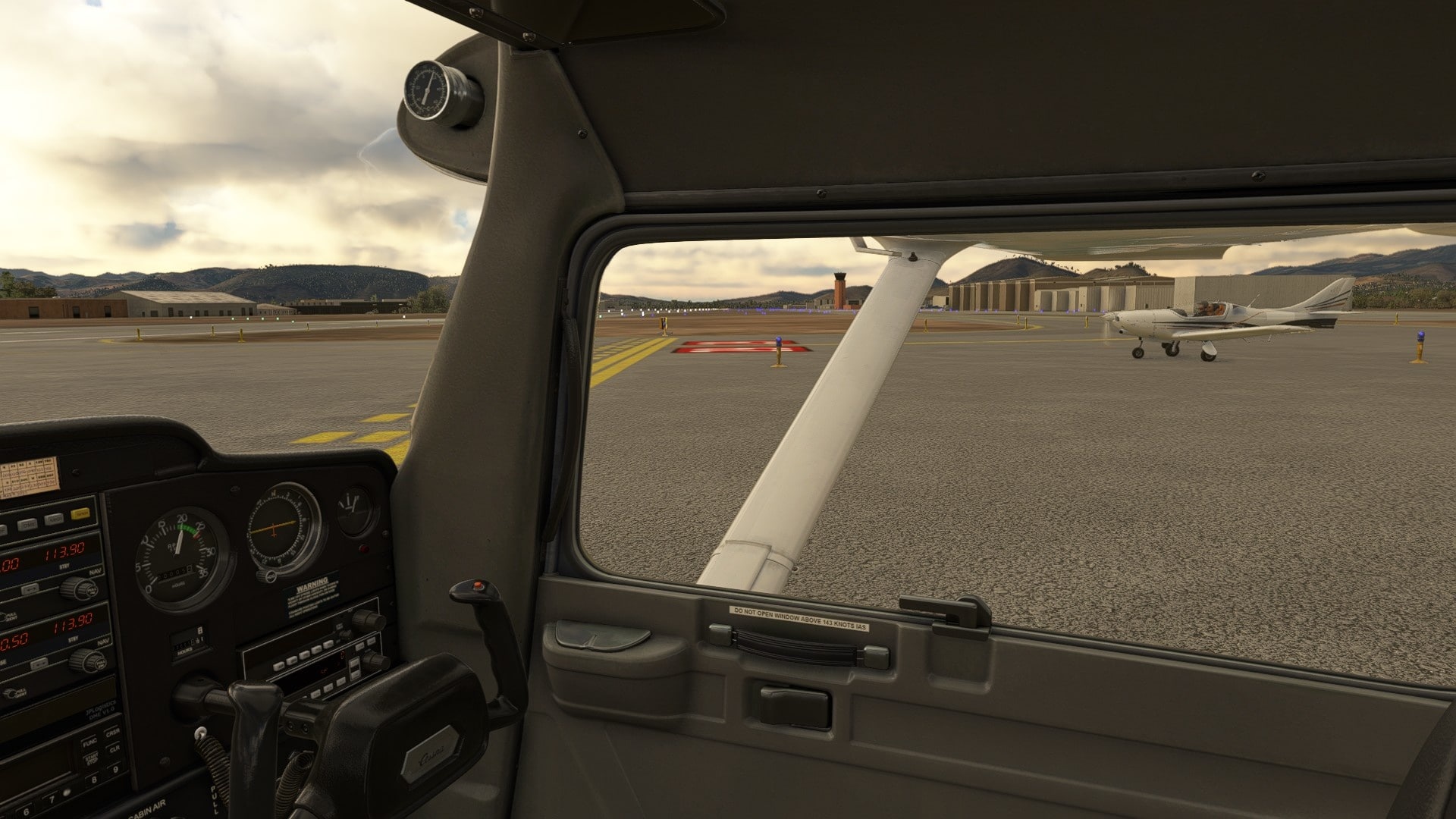
But when I finally got over myself and everything went well, it was a high like the first time I radioed in a real plane by myself. Whether it’s VATSIM, IVAO or PilotEdge, the feeling of sharing the same airspace with other real people in an online network, cooperating with them even though you don’t always see the other aircraft, and working together to ensure a smooth flow of traffic is one of the things I described as ‘nice’ at the beginning.
Flying with a mission
Another aspect that makes Flight Simulator a role-playing game for me in the meantime: quests, or somewhat more profane orders and missions. In reality, besides the flight experience itself, I was motivated by learning the many new topics and my long-term goal of one day flying comfortably to the Baltic Sea with my wife. In the simulator, you have to look for other targets.
One is virtual airlines. On the one hand, there are real player-operated airlines, often as virtual versions of real airlines. You can register with them and gradually work your way up – some are very relaxed, others attach great importance to realism and regular attendance.
On the other hand, there are also add-on programmes with extensive management functions: In Air Hauler 2, NeoFly or OnAir, we set up our own airline, have orders generated that we fly in the flight simulator and with which we earn virtual money or collect experience points. We set up our own base at an airport and hire AI personnel who also earn money for us. It all works pretty much like Euro Truck Simulator.
I’m currently having a lot of fun in NeoFly gradually turning around the freight market of a region, establishing myself as a VIP pilot or fulfilling search-and-rescue missions. If you then carry out these flights logged into VATSIM, IVAO or PilotEdge, it all becomes quite demanding. Then I can’t do more than one flight per evening, but again I’m very pleased when everything has gone well – no radio errors, flight and landing to the satisfaction of my passengers.
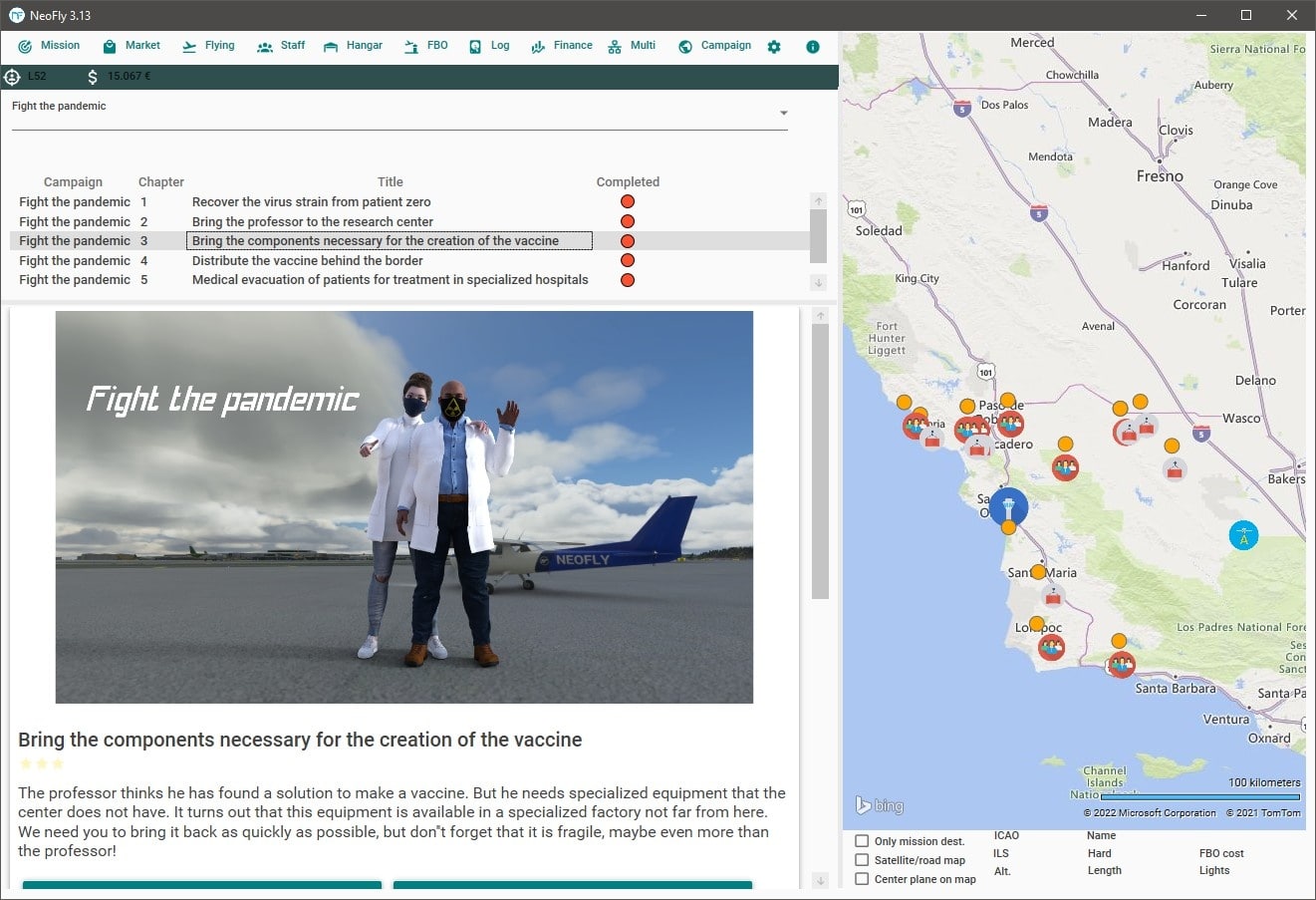
This is NeoFly
(NeoFly) is a free career add-on that offers a wide variety of missions. Whether classic transport or passenger missions, VIP transports, sightseeing flights, smuggling missions or – as a highlight – a quest series to fight a pandemic: in Flight Simulator we carry out the flights, in NeoFly we manage our company. Similar programmes that have to be paid for are (Air Hauler 2) and (OnAir); also in Early Access is (The Skypark), which impresses with a clear, tablet-like interface, but still has few functions.
Flying with the one plane
You can also earn larger aircraft gradually in games like NeoFly or Air Hauler (although of course they are present in the simulator itself from the start). But even though I like variety – it’s not a bad idea to really get used to a certain aircraft type so that you know its flight behaviour very well.
This is as true in reality as it is in simulation, although in the latter we also have to deal with the … Let’s call it politely ‘peculiarities’ of the simplified default aircraft of Flight Simulator. Just as not every real aircraft behaves exactly according to the manual, simulated aircraft usually do even less. But if you know these peculiarities and the chosen model otherwise behaves reliably and predictably despite deviations from reality, you can have plausible flying experiences.
But which aircraft is suitable for this? Since I was flying ultralights in the real world, I’m sticking to small planes in the simulator at the moment (I don’t have the confidence to fly airliners online yet).
My favourite aircraft is currently the small Cessna 152 with the JPLogistics (Enhancement Mod). It’s not a UL, but it’s comparable in performance and flight feeling. The mod improves the standard aircraft in flight behaviour and system simulation.

Most importantly, the C152 flies with the mod just as well behaved and reliable as I imagine a small trainer aircraft to be. It’s perfect for taking your first steps on a network like PilotEdge, VATSIM or IVAO, and even simple NeoFly missions (like round trip with one passenger, small deliveries and the like) can already be done with it.
If you want something higher, faster, further, the Beechcraft G36 Bonanza is recommended, but also modified. The G36 (Improvement Project) is for the Bonanza what the JPLogistics mod is for the Cessna – a formerly rather shaky default aircraft becomes reliable, predictable and gets more realistic systems.
Role-playing as a private pilot or as a small sightseeing flight operator is great to start with both models and continue online for months. Of course, you can also use mods like the FlyByWire A320neo or the improved CJ4 for both, if you are comfortable with the aircraft and the necessary instrument flight rules and communication modes. Then the virtual airlines mentioned would also be a realistic option.
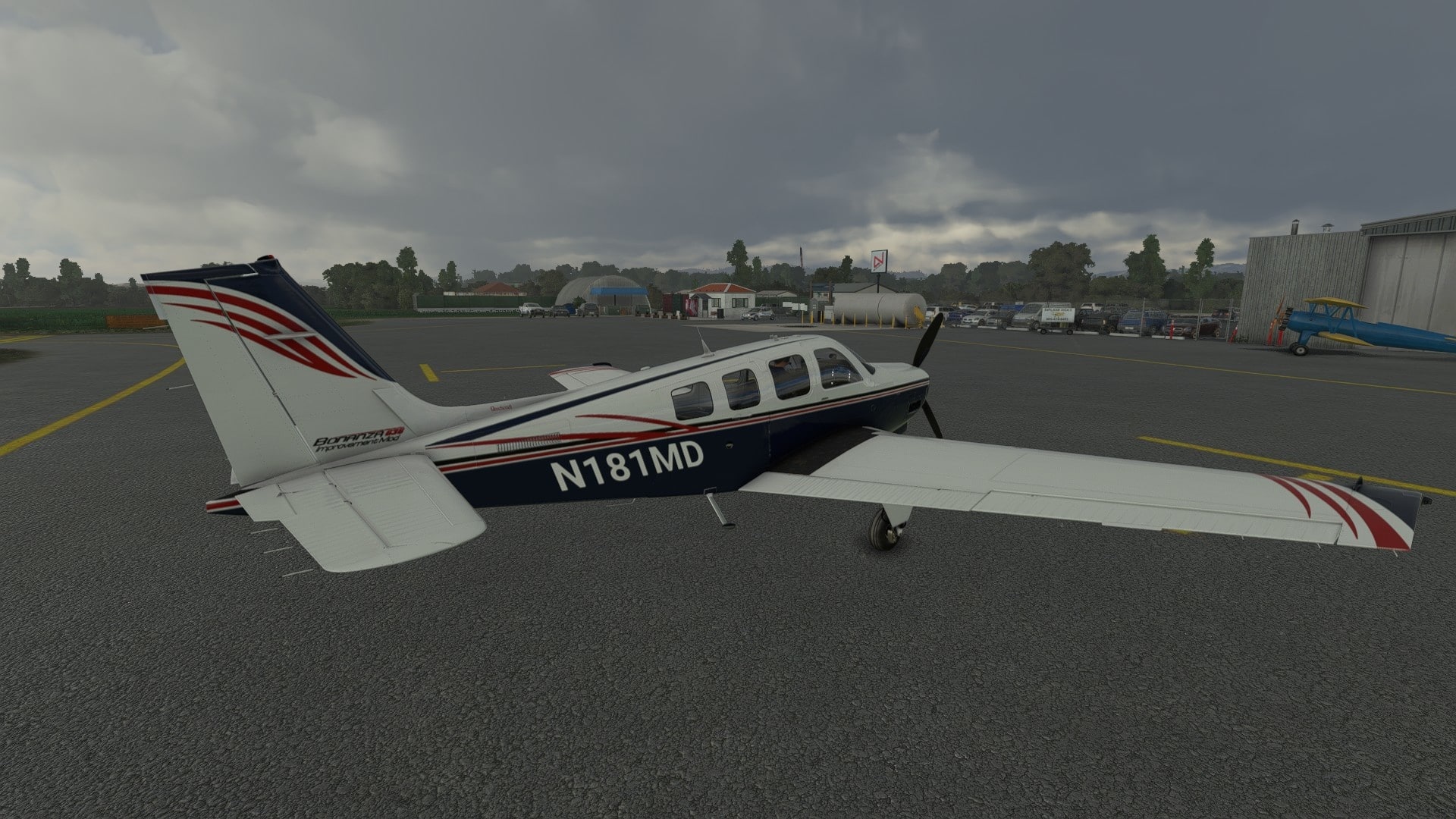
Flying with red tape
“Put away your bureaucracy” a flight instructor once said to me when I was rummaging around in some maps and checklists just before a landing approach and forgot to fly. And he was right, because it’s easier to fly if you have the most important data quickly at hand. Good planning helps a lot.
If you’re familiar with my plus and special issue guides to navigation, you probably know that I like maps and planning with compass, ruler and pencil. Fortunately, these techniques also work in my online US West Coast flying region, even if the navigation charts look different (especially the airspace boundaries were confusing at first). So manual flight planning is still part of my flying life.
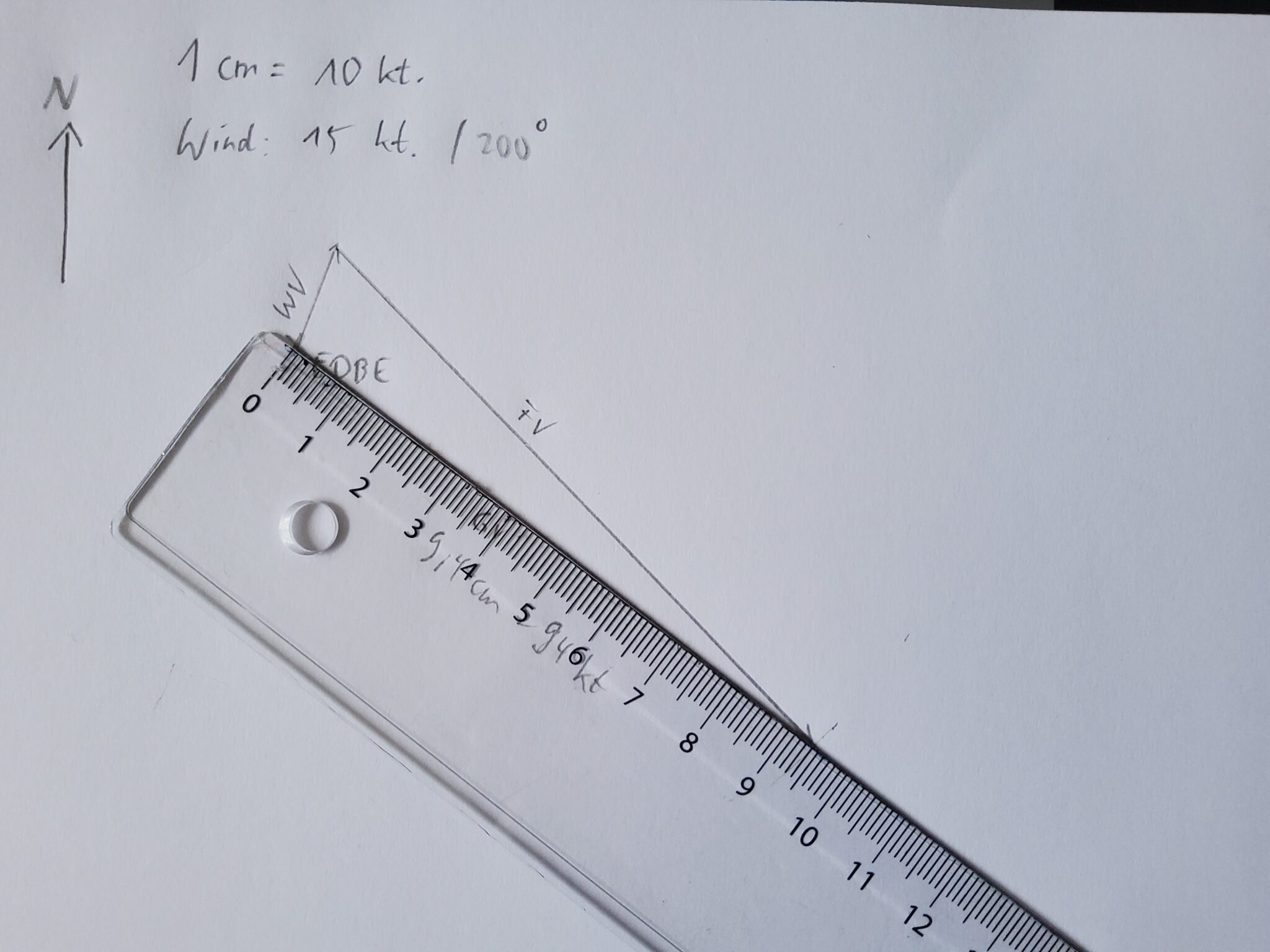
One aspect of bureaucracy I missed, however, was filling out the flight log after landing – the proof that the flight took place, how long it lasted and whether there was anything special to note. Quite unspectacular. Actually.
The flight simulator automatically keeps a log, but that’s just not the same as taking the pen out of the flight jacket and writing it down myself. So now I have ‘repurposed’ a flight log for the sim.
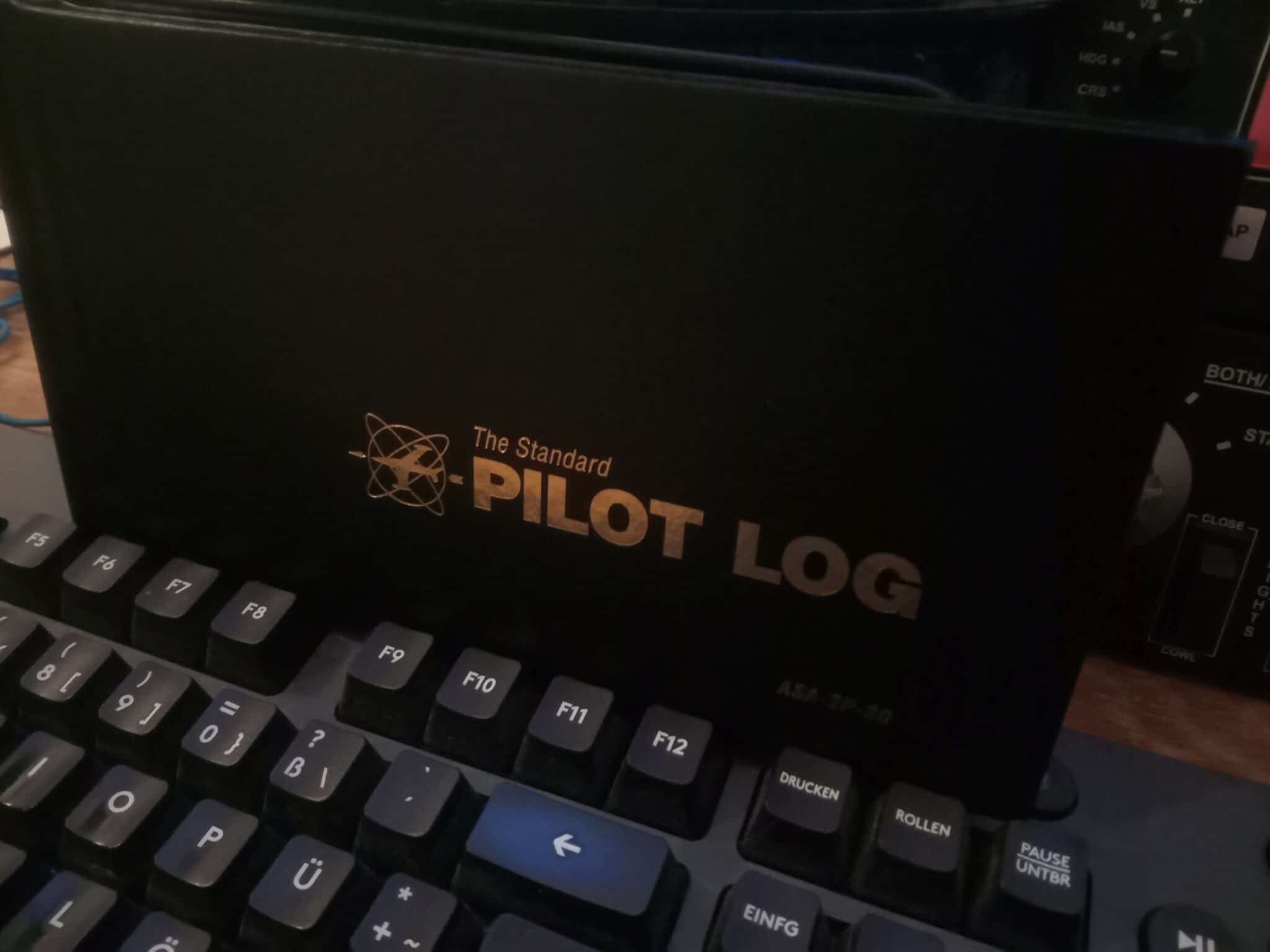
I bought this at the beginning of the flight training, but saved it for “after the exam” (because the training flights are logged in the training certificate). I now enter all simulated flights in the book and also note whether I did them online and/or with NeoFly. When a page is full, I sign it in the space provided.
Yes, I know that may sound ridiculous. But it’s just part of the role. Like the jacket I’m putting on now. Just to see if it still fits.

